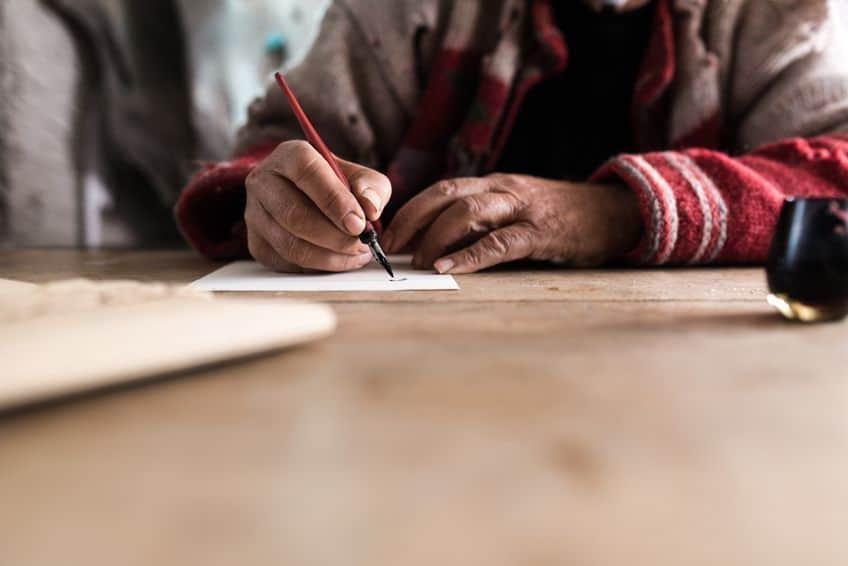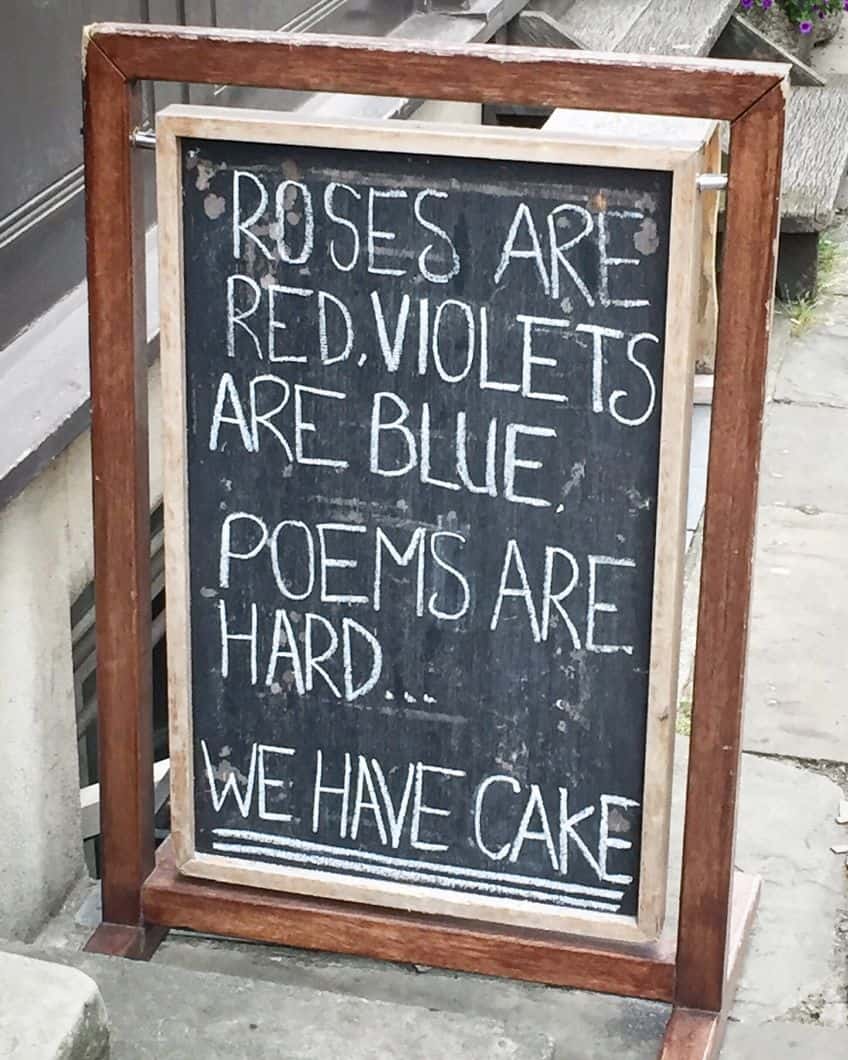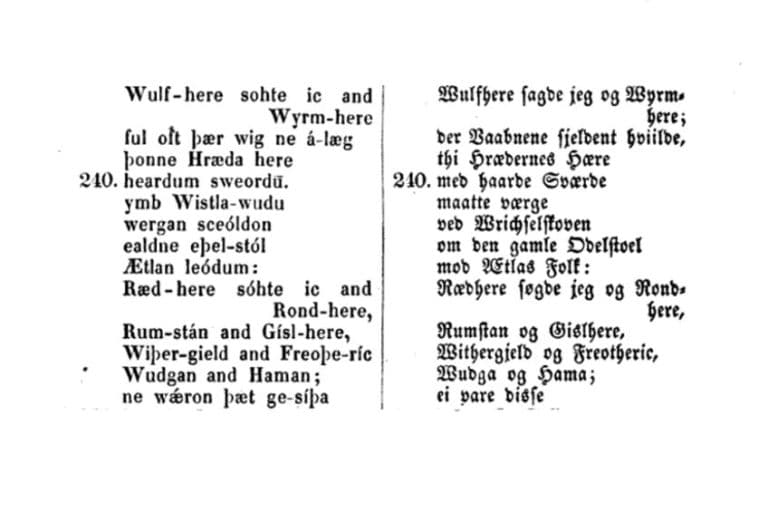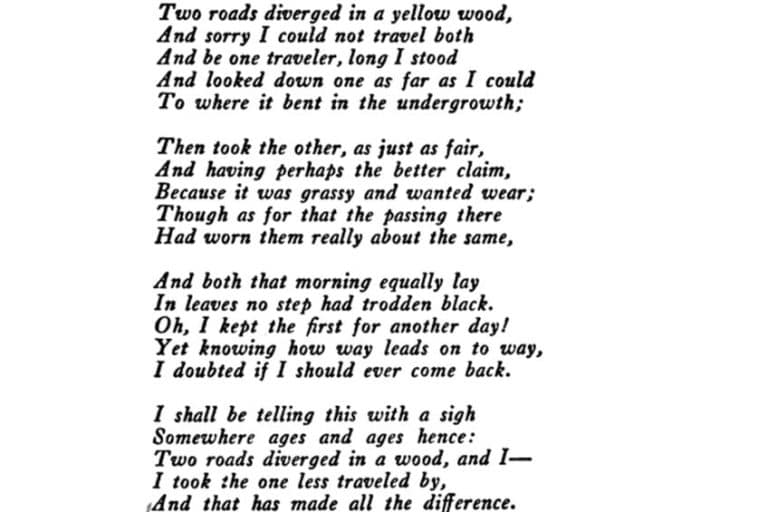Repetition in Poetry – Tips on Writing an Effective Poem
What is repetition in poetry? Why is repetition used in poetry? What is the purpose of repetition in poetry? Each of these ideas will be explored in the article below. We will examine what repetition is in the first place, a number of different methods for it on both formal and thematic levels, some examples, and other uses of repetition. If this is something that interests you, then keep reading to learn a little more about repetition in poetry.
A Look at Repetition in Poetry
What is repetition in poetry? Repetition in poetry is a very broad concept as it simply refers to the repeated use of some elements within a poem. There are many different types of repetition in poetry, but it should be noted that these different types of repetition are used for a variety of purposes. That is what we will examine over the course of this article.

The most important question to likely ask here is: “Why is repetition used in poetry?”, and the answer is quite a simple one. Repetition is generally used in poetry as a means of creating emphasis or rhythm, and there are many different methods that can be adopted. Those different methods will be discussed below.
The purpose of repetition is multifaceted and important to understand if you wish to make use of repetition in any poetry that you decide to write.
Different Ways to Use Repetition in Poetry: The Formal Methods
There are many different types of repetition in poetry, and so we are going to look at a few of those formal methods below. Each of these examples of repetition in poetry can be found in many poems, and you too can make use of these structures and methods if you too wish to try your hand at poetry.

Alliteration
Alliteration is one of the most famous forms of repetition in poetry and it can be found in many sources. The idea behind alliteration is that it allows for a repetition of consonant sounds, and one of the most famous and oft-repeated examples of this particular form of repetition is the phrase: “She sells seashells by the seashore”. This is an example that is often used to illustrate this idea in schools. Alliteration can be used as a way of creating rhythm and emphasis in a poem, and it allows for a far more musical quality to be found in a poem.
This method can often be used sparingly, which allows the alliterative sections to further stand out, or it can be used throughout the structure of a poem to create a far more flowing and rhythmic style.
Anaphora
This is a common repetitious structure that can be used in a lot more than poetry because it is a common rhetorical device that entails the repetitious use of a specific structure. For instance, this could mean the repetition of a specific word or phrase, such as by repeating a certain rhetorical question or sentence opening. Perhaps the most famous non-poetic examples can be found in speeches, such as Martin Luther King Jr.’s “I Have a Dream” speech in which the phrase “I have a dream” is repeated numerous times.

This can often be found in poetry because there is something inherently emotive and memorable about using the same phrase over repeated lines in a poem. This method allows for a poem to repetitively reinforce the same idea to emphasize it and ensure that the reader understands that it is something very important within that context. This can be found in many poems and is an effective means of presenting ideas that need to be reinforced and focused on throughout a poem.
Assonance
This is one of the most common forms of repetition in poetry, but it is also a form that does not receive as much attention as its more famous cousin, alliteration. This form of repetitious structure in poetry is essentially the same as alliteration except that instead of making use of the repetition of consonant sounds, which are far more numerous in the English language (and in most languages), assonance makes use of the repetition of vowel sounds. Vowels are most often found within words rather than at the start of words, so it can often be harder to identify assonance over alliteration, but this particular form of repetition in poetry allows for the creation of rhyme and rhythm.
All rhyme is actually based on assonance as rhyme often entails the internal features of a word, which is what rhyme repeats.
Meter
Meter is one of the most common and notable aspects of repetition in poetry. This is the way in which lines within a poem are arranged around a syllabic beat. This means that the lines of a poem play with the idea of stressed and unstressed syllables. This is most commonly seen, in English, in the form of meter known as iambic pentameter. This form entails the use of five metrical units per line, and each unit entails one stressed and one unstressed syllable for a total of ten syllables per line.
The reason that meter is used, and the reason that it is an example of repetition in poetry, is because meter is fundamental to creating a more musical and rhythm-oriented flow to a poem. This means that it entails a repeated structure in the form of the syllables that follow on from one another in a consistent and repetitious arrangement. There are many different types of meter, and they are all generally followed once they are used, and so each line would repetitively use the same meter throughout the poem.
Polyptoton
This particular poetic element is a more unusual one in the present day, but it does provide a certain interesting aspect of repetition in poetry. The general idea behind this poetic element is that it entails the repetitious use of a word and either itself or derivative forms of that particular term. So, this could be seen in something like: “The fighting was fought by everyone in the fight.” The root may be the term “fight”, but through polyptoton, that root could be altered and reused as a form of repetition in poetry. However, this term can also refer to the simple repetition of a single word in a poem, and this can often be used as a means of reinforcing an idea over repeated lines in a poem.
For instance, if you want to emphasize the idea of a fight, you may use the word “fight” repeatedly throughout the poem to reinforce that idea.
Rhyme
Rhyme is fundamentally repetitious in nature. Repetition refers to repeated structures, words, and phrases within a poem, and while we may not see rhyme as standard repetition, it is the repetition of a sound. Rhyming words with one another based on a mutually shared general sound is an example of repetition in poetry. A poem that rhymes “house” with “mouse” is using that shared phonetic similarity between these two words to allow for repeated sounds in a poem.

Rhyme is often considered to be one of the most famous elements of poetry even though there are many poems, especially in the contemporary era, that do not make use of rhyme at all. Rhyme allows for a certain musicality to a poem, and when it comes to more contemporary forms of music, poetic devices, such as rhyme, are prevalent in the poetry-inspired lyrics that are adopted.
Typography
Typography is an overarching term that refers to the way in which a poem is arranged. This encompasses the entirety of the examples of formal elements of a poem. So, this refers to the way in which stanzas are arranged, the length of lines, the use of any kind of shape for the poem itself, and so on. For most traditional poems, the typography is quite a standard thing, and as an example of repetition in poetry, it is quite simple as, for instance, the use of repeated stanzas can be seen as an instance of repetition in poetry. We do not often associate typography with repetition in poetry, but if there are repeated elements that can be found within the actual structure of a poem, that is a form of repeated structure. The use of a repeated chorus, for instance, forms part of the general layout of a poem, and that layout is the typography.
However, this particular element of a poem is often the final thing that may be considered along repetitious lines.
Another Way to Use Repetition in Poetry: On the Thematic Level
The way in which repetition in poetry has been discussed until now has been on a far more formal level. This has entailed the use of formal structures and methods, like alliteration and rhyme, and how they are used in repeated lines in a poem. However, that is not the only way in which repetition can be found in poetry. Instead, repetition in poetry can also be found on a content-oriented level, such as in the themes that a poem explores.

The distinction between form and content should be understood for a better understanding of this in general. The form of a poem entails the actual language, structure, words, and so on that a poem uses, and so the above mentioned methods of repetition in poetry are all examples of formal approaches to repetition.
Content, on the other hand, refers to what is in the poem itself. What are the meanings that are explored, the ideas expressed, the narratives told, and so on? This is another means by which repetition in poetry can be adopted. While structures and words can be repeated, ideas can also be repeated. So, a poem that repetitively discusses death is using a more thematic form of repetition.
This is, perhaps, not as well-known as more formal examples of repetition in poetry, but it is as consistently used in the writing of poetry.
Examples of Repetition in Poetry
While it has already been stated that there are many different ways to make use of repetition in poetry, it is often best to show this through actual examples. So, each of the following poems is an example of repetition in poetry, and they use repetition for a number of reasons and in a number of different ways.

The Waste Land (1922) by T.S. Eliot
| Date Published | 1922 |
| Type of Poem | Epic poem |
| Rhyme Scheme | Variable |
| Meter | Variable |
| Topic | Post-WW1 decay and disillusionment |
The Waste Land by T.S. Eliot is one of the most important poems from the Modernist era, and it is also very long. It does not entail the usual instances of repetition in poetry that one might consider, because commonly repeated elements, such as rhyme and meter, are variably used throughout the poem and so they change around when needed.
This produces a more unusual structure than most poems make use of.
However, this poem is also a good example of repetition in poetry as it repeats a variety of themes numerous times throughout the poem, and the poem also concludes with a repeated phrase. This makes this particular poem a good example of a more thematic style of repetition rather than the more formal styles that one might ordinarily associate with repetition in poetry.
Do Not Go Gentle Into That Good Night (1951) by Dylan Thomas
| Date Published | 1951 |
| Type of Poem | Villanelle |
| Rhyme Scheme | ABA ABA ABA ABA ABA ABAA |
| Meter | Iambic pentameter |
| Topic | Affirmation of life |
This particular poem is a notable example of repetition in poetry, but it is also a little unfair as an example because it is also an example of a specific type of poem that is known as a villanelle. This particular poem type entails the repetition of certain lines.
The first and third lines of the poem are repeated multiple times throughout the poem with no variation in the line.
In terms of this particular poem, this repetitious structure allows the poem to reinforce the idea of trying to live one’s life as boldly as possible. This repetition is a means of emphasis that is strongly felt as the repeated lines are stated over and over again. The result is a hammering effect that wants to ensure you remember those particular words and what they mean for the poet and the reader.
In Detention (1980) by Chris van Wyk
| Date Published | 1980 |
| Type of Poem | Protest poem |
| Rhyme Scheme | None |
| Meter | None |
| Topic | Suspicious prisoner deaths |
This poem is a fantastic example of the way in which repetitious formal structures can be used to reinforce an idea. This particular poem is a protest poem that was against the Apartheid regime in South Africa for several decades. The poem is specifically aimed at the way in which many prisoners were mysteriously killed in prisons during this period of time.
The poem uses a few of the stock ways in which the government stated that prisoners died, such as by slipping on a bar of soap or falling, and then mixes them until they become absurd.
This is perhaps shown with the first and last lines of the poem. The first line is written as more normal and believable, and it simply states that “He fell from the ninth floor”, but this and other methods of death are intermingled with one another to create increasingly ridiculous ways in which prisoners died. This culminates in the final line which states: “He hung from a piece of soap while washing”. The ridiculousness of the supposed causes of death is a criticism of the absurdity of believing the government’s justifications for the death of prisoners.
How to Use Repetition in Your Poem: To Use or Not to Use
If you want to write poetry, you can also decide whether or not you want to make use of repetition and repetitious structures in your work. Repetition is a means of saying something, of reinforcing something. It has already been shown, through the examples of the different methods that can be used, that the use of repetition in poetry allows certain ideas to be further explored and elaborated on over the course of the poem.
In addition to this, the absence of repetition in poetry also says something.
There is a concept known as “negative space”, and these are the sections of a text that are not discussed, not highlighted, or not mentioned. What is not said can often be just as important as what is said. So, if, for instance, you decide to exclude rhyme from your poetry, why? Why have you decided to eschew repetitious structures that are so commonly used? Was there a reason? You should think about these things when either making or not making use of repetition in poetry.

The Use of Repetition in Music: Lyrics As Poetry
Repetition is not only used in poetry but also in music. An argument can be made that much of contemporary music, provided it makes use of lyrics that are sung, uses poetry. Poetry is often thought of as distinct from lyrics in music, but is that really the case? When a rap song uses extensive rhyme, is that not similar to a poem that makes extensive use of rhyme?
Many tend to view poetry as a very old-fashioned idea, but we do actually engage with a type of poetry every day (or at least many of us engage with music every day).
In terms of lyrics, repetition is used for many of the same reasons as it is used in poetry. It creates a more musical quality, it creates rhythm and emphasis, and so on. In addition, repetitious structures are usually pleasant to listen to. They simply sound nice. So, repetition is pretty much found everywhere.
Repetition Outside the Arts: Its Use As Rhetoric
Repetition is not unique to poetry at all, and this can be used in rhetoric too. It has already been stated as an example that the “I Have a Dream” speech by Martin Luther King Jr. is perhaps one of the best examples of a repetitious structure being used in a non-poetic setting. The idea behind repetition in general is that it can be seen as a means of reinforcing certain ideas.

We often use repetition in rhetoric and ordinary speech because we want to emphasize a certain idea that should be taken seriously or understood. This often involves the use of repeated rhetorical questions or simply re-stating something over and over again to ensure that it is processed above all else. We tend to remember when something is stated more repetitively than when it is only stated once.
We come, at last, to the end of our examination of repetition in poetry. We have looked at repetition in a number of different ways, such as its use in both formal and content aspects of a poem, a few different types of repetition, a number of examples, and where repetition can be used outside of poetry. Hopefully, you have learned a little about repetition in poetry and why it is used so often in this medium. If you too want to try your hand at repetition in poetry, give it a go!
Frequently Asked Questions
What Is Repetition in Poetry?
Repetition is a commonly used literary device that entails the repeated use of words, phrases, structures, and so on within a poem. There are many different reasons that repetition can be used in a poem, but the most common of them are usually oriented around emphasizing said repeated sections.
Why Is Repetition Used in Poetry?
Repetition is used in poetry for many different reasons. The most common is often as a means of emphasizing something. However, repetition in poetry can also be used to create rhythm, patterns, catchy sections, and so on. There is no single reason that repetition is used in poetry, but it is a common method that can be found in this literary form.
Is Repetition Used in All Poetry?
Repetition is not used in all poetry. There are many instances of poetry that only state sections of the poem a single time, and the use of repetition or the lack of repetition are equally as valid as ways in which a poem can be arranged.
Justin van Huyssteen is a freelance writer, novelist, and academic originally from Cape Town, South Africa. At present, he has a bachelor’s degree in English and literary theory and an honor’s degree in literary theory. He is currently working towards his master’s degree in literary theory with a focus on animal studies, critical theory, and semiotics within literature. As a novelist and freelancer, he often writes under the pen name L.C. Lupus.
Justin’s preferred literary movements include modern and postmodern literature with literary fiction and genre fiction like sci-fi, post-apocalyptic, and horror being of particular interest. His academia extends to his interest in prose and narratology. He enjoys analyzing a variety of mediums through a literary lens, such as graphic novels, film, and video games.
Justin is working for artincontext.org as an author and content writer since 2022. He is responsible for all blog posts about architecture, literature and poetry.
Learn more about Justin van Huyssteen and the Art in Context Team.
Cite this Article
Justin, van Huyssteen, “Repetition in Poetry – Tips on Writing an Effective Poem.” Art in Context. September 8, 2023. URL: https://artincontext.org/repetition-in-poetry/
van Huyssteen, J. (2023, 8 September). Repetition in Poetry – Tips on Writing an Effective Poem. Art in Context. https://artincontext.org/repetition-in-poetry/
van Huyssteen, Justin. “Repetition in Poetry – Tips on Writing an Effective Poem.” Art in Context, September 8, 2023. https://artincontext.org/repetition-in-poetry/.









